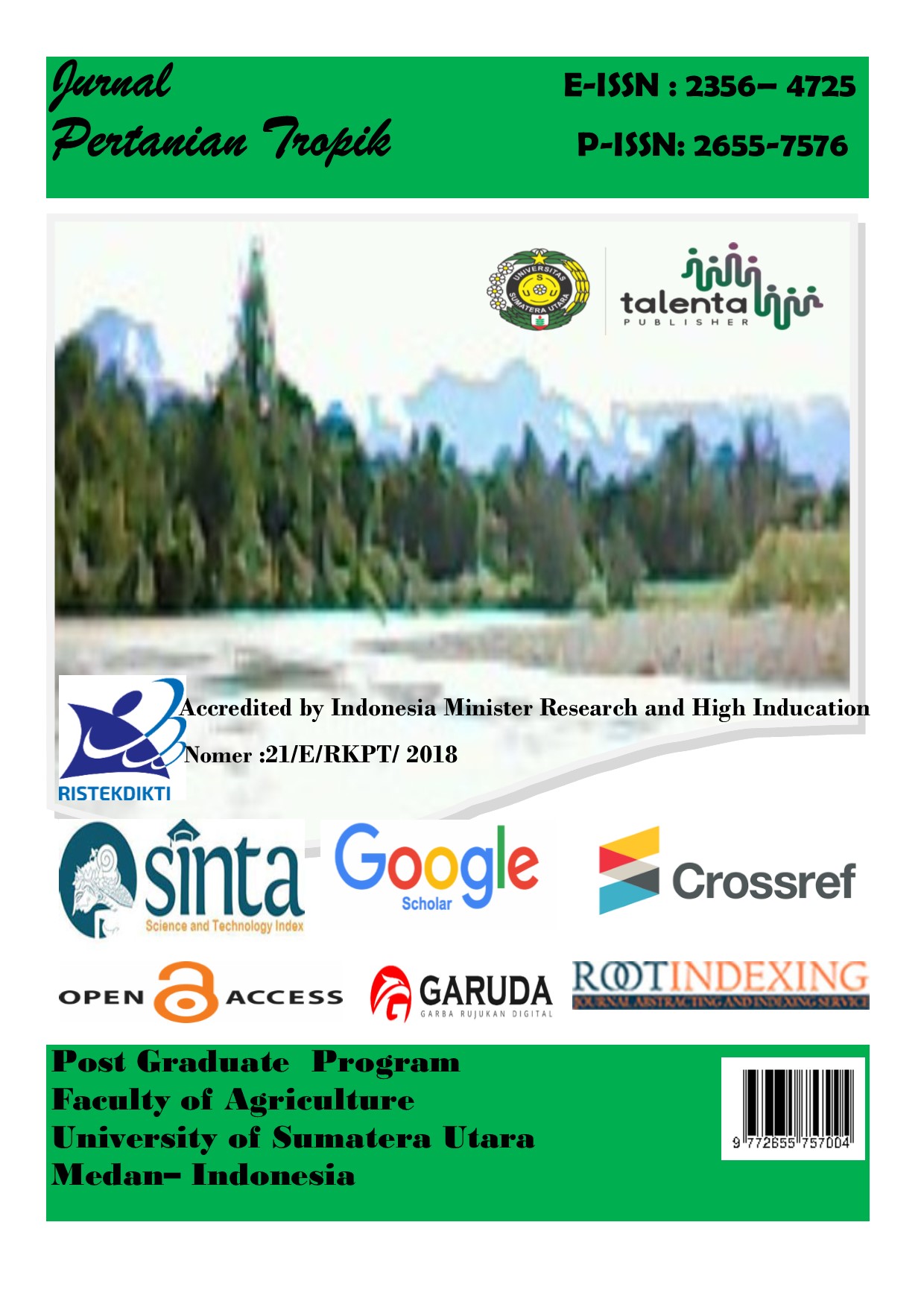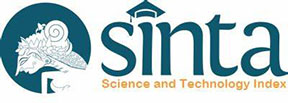Productivity of Arenga Pinnata Merr Male Flower Stalks in South Tapanuli Regency Referring to Sustainable Agricultural Systems
DOI:
https://doi.org/10.32734/jopt.v7i3.4825Keywords:
Aren, Productivity, Male Flower StalkAbstract
This study aims to determine and complete the database related to the productivity level of male palm flower stalks in producing sap in wild populations of natural habitats in the South Tapanuli Regency. The research was conducted in 2 villages in 4 districts with a total sample of 40 palm plants. The stages in this research were carried out in three stages. The first stage is a survey sampling carried out by purposive sampling, namely the sampling technique to be used as a sample based on existing criteria, namely: 1. The shape of the stalk, 2. Color of a stalk, 3. Color of series, 4. Color of sap, 5. Length of stalk, 6 7. Stalk Diameter, and 7. Nira Production Data. The second stage is the data collection on the productivity of male palm flower stalks at all levels of the stem in producing sap. The third stage is a productivity data analysis. The results showed that the productivity of male flower stalks at each stalk level was in accordance with the amount of production and weight of sugar produced. Male flower stalk I have the highest amount of sap production and sugar weight followed by stalk levels II, III, IV, and V. Male flower stalk I have the best productivity of all levels of the male flower stalk, after that there is a decrease in the production of sap and sugar for productivity. Male flower stalks II, III, IV, and V. Productivity of the best male flower stalks produced an average sap production of 968.55 liters/stalk and an average sugar weight of 526.79 kg.
Downloads
References
Baharuddin, M.M. and Bandaso, H., 2007. Pemanfaatan nira aren (Arenga pinnata Merr) sebagai bahan pembuatan gula putih kristal. Jurnal Perennial, 3(2), pp.40-43.
Harahap, D.E., 2013. Kajian Produktivitas Tanaman Aren Berdasarkan Status Hara Tanah dan Morfologi Tanaman pada Skuen Tinggi Tempat di Kabupaten Tapanuli Selatan.Universitas Sumatera Utara. Medan.
Lempang, M. 2012. Pohon Aren Dan Manfaat Produksinya. Info Teknis EBONI, Vol.9 No.1, Oktober 2012 : 37-54.
Harahap, P., Harahap, E.M., Harahap, D.E. and Harahap, F.S., 2018. Eksplorasi dan Identifikasi Tanaman Aren (Arenga pinnata Merr) di Kabupaten Tapanuli Selatan. Jurnal Pertanian Tropik, 5(3), pp.423-427.
Harahap, P., Harahap, M.K. and Harahap, F.S., 2019. Identifikasi Karakter Fenotip Daun Tanaman Aren (Arenga pinnata Merr) di Kabupaten Tapanuli Selatan. Jurnal Pertanian Tropik, 6(3), pp.472-476.. https://talenta.usu.ac.id/jpt. ISSN NO: 2356- 4725/p- ISSN : 2655-7576.
Permentan_RI, 2013. Pedoman Budidaya Aren (Arenga pinnata Merr) yang Baik. Lampiran Peraturan Menteri Pertanian Republik Indonesia Nomor. 133/Permentan/OT.140/12/2013.
Pontoh, J., 2012. Metode Analisa dan Komponen Kimia dalam Nira dan Gula Aren.
Santoso, S., 2017. Menguasai Statistik dengan SPSS 24. Elex Media Komputindo.
Downloads
Published
How to Cite
Issue
Section
License
Copyright (c) 2020 Jurnal Pertanian Tropik

This work is licensed under a Creative Commons Attribution-ShareAlike 4.0 International License.






















